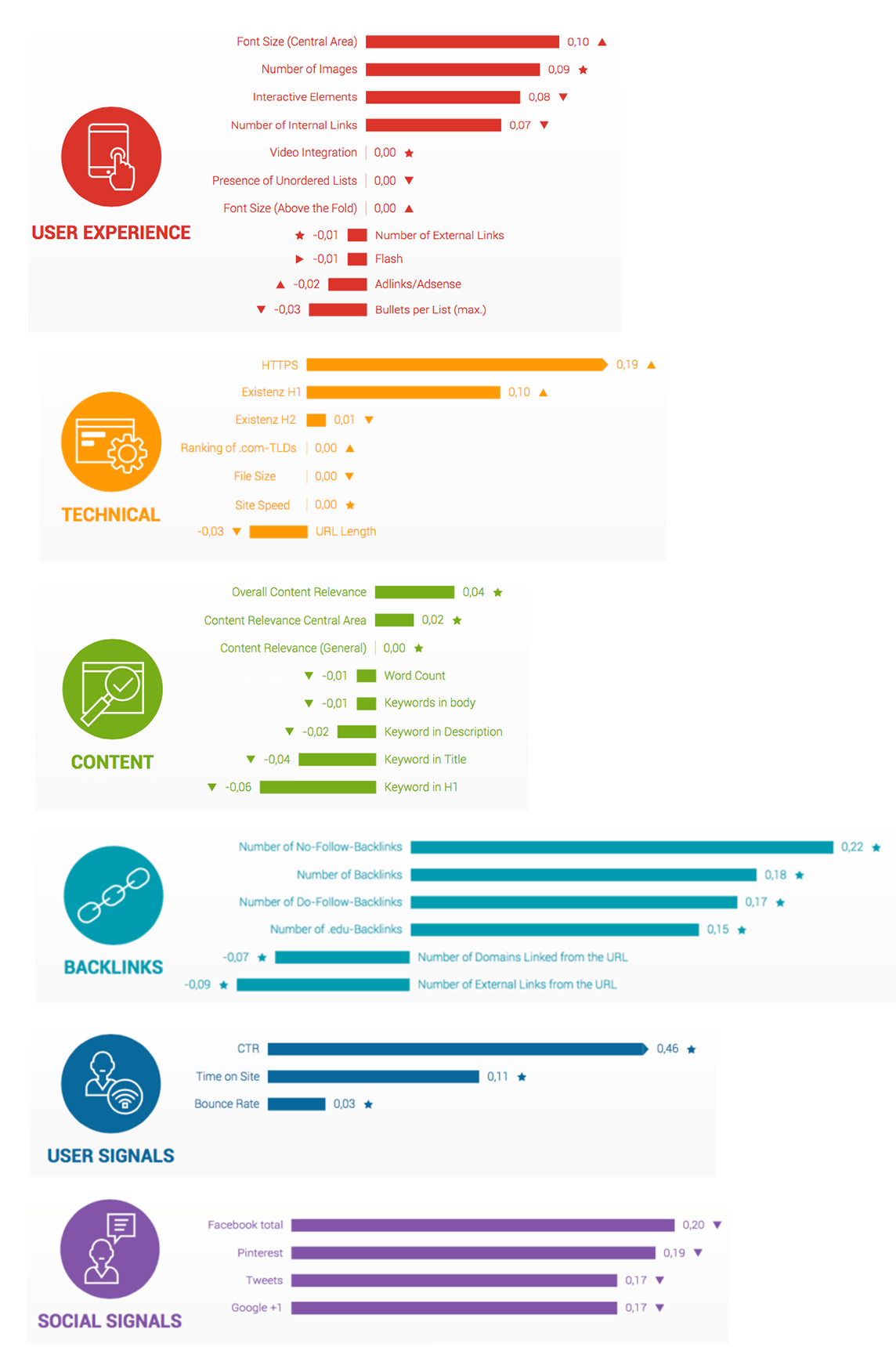Google ranking factors | Weboptim
A Searchmetrics survey shows that the importance of content is increasing, while links are becoming less important. The study looked at the top 20 search results for 10,000 keywords on the Google.com domain.
According to the survey, while content relevance is a growing phenomenon in Google's eyes, links are a declining ranking factor.
Further results from the study:
- The URLs with the highest content relevance are those in positions 3-6.
- Content readable on desktop is about a third longer than content written for mobile.
- In 2016, only 53% of the top 20 URLs contained a keyword in their title.
- For the top 10 URLs, the time spent on the page was 3 minutes 10 seconds.
- The average bounce rate for first page hits was 46 percent.
- The average click-through rate for the top 3 pages was 36%.
- Almost half of the websites in the top 10 use HTTPS encryption.
- The first top 10 domain 86% is a .com domain ending in .com.
- The file size of pages ranked on mobile is one third smaller than their desktop counterparts.
- Pages load a second faster on mobile than on desktop.
- The top 100 most visible domains all have mobile-friendly websites for smartphone users. Outside the top 100, this ratio is around 78.
- 2016 saw a significant increase in the use of structured elements such as lists and bulleted lists, resulting in a better user experience.
- The correlation between social signals and Google rankings remained similar to previous years.
- Links are now just one of many influencing factors. The correlation between links and rankings remains high, but their importance is decreasing.
According to another study published earlier this year, links remain a very important factor in Google's ranking algorithm. The above study agrees, it just says that their importance has declined.
Over the years, Google has been using increasingly sophisticated AI and machine learning techniques like RankBrain to help understand the search intent behind the words you're looking for, so that results can be even more relevant. User signals, such as how often each result was clicked on or how much time was spent on the page, help the search engine get an idea of how well searchers' questions were answered. This allows them to constantly refine and improve the relevance of their algorithm.
The following graphs show the correlations between each factor: content, user signals, technical design, user experience, social signals and links.
An up arrow means that the value of the factor is increasing, a right arrow means that the value is unchanged, a down arrow means that the value is decreasing, and * is a new feature that is just starting to be calculated.
Source: searchengineland.com
